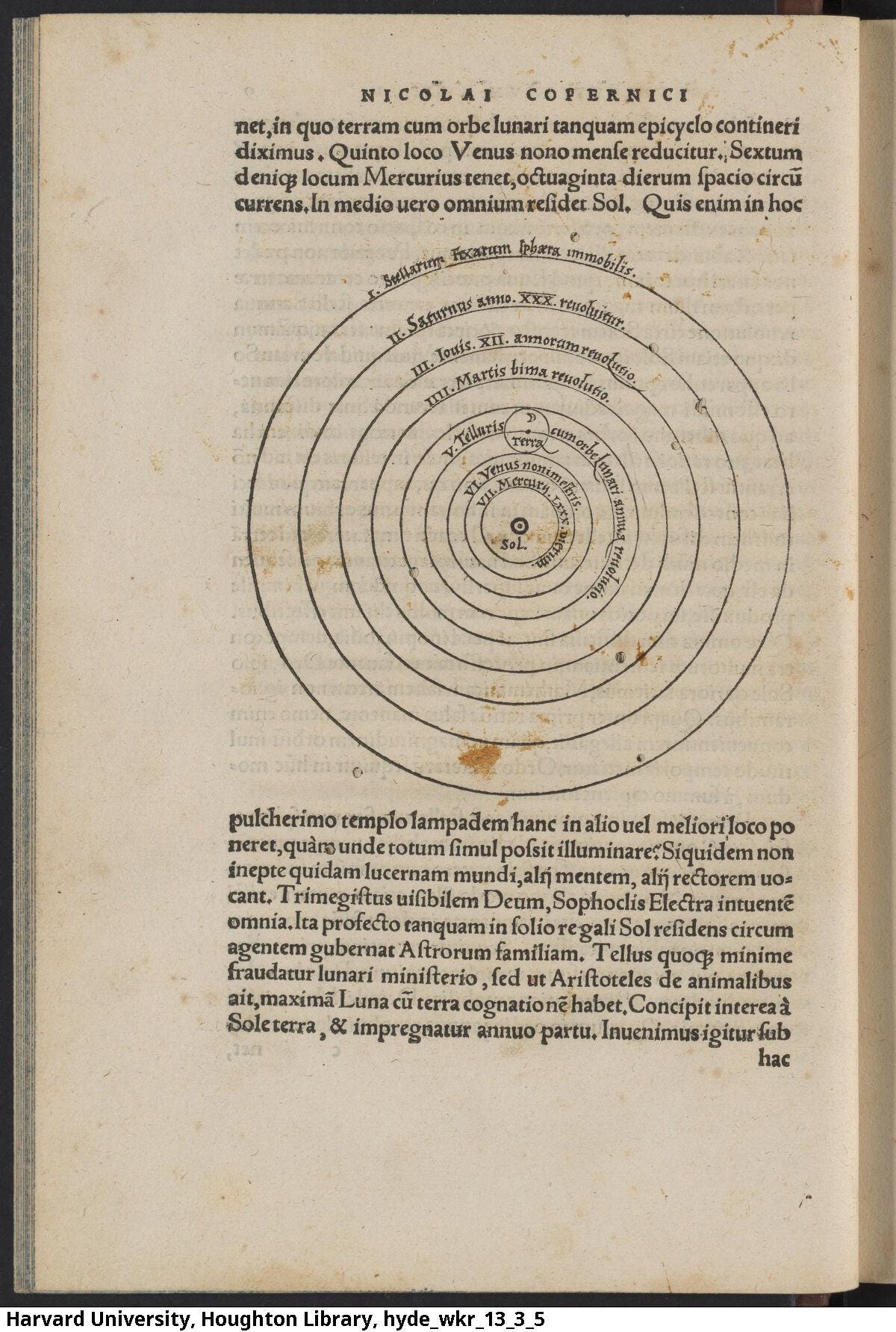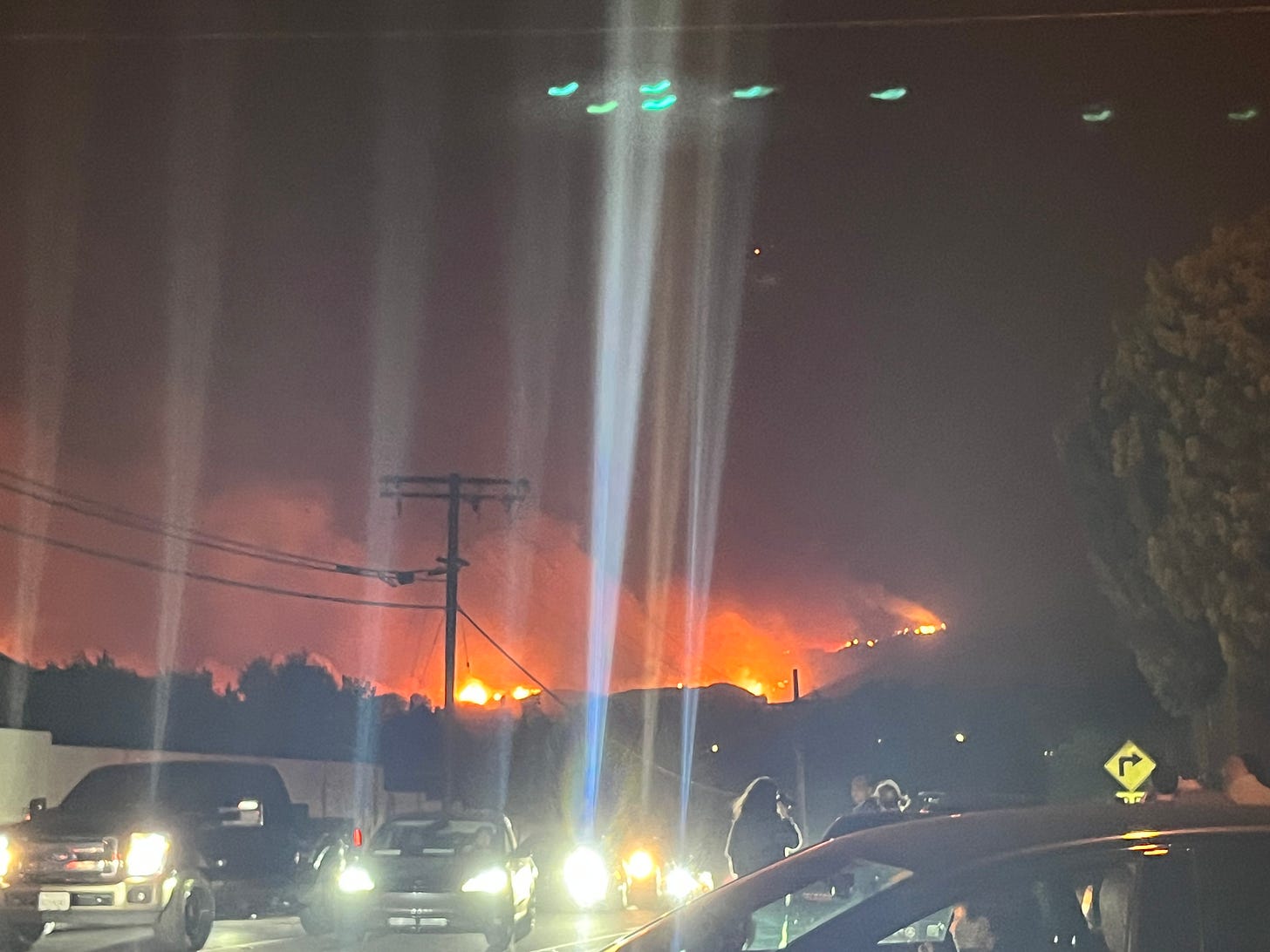What's a Designer to Do with All of This Shite?
Making art in age of upheaval, plus what would Copernicus do

Dear Designer,
On a group chat late last week, a college friend in Los Angeles mentioned that she had to evacuate her apartment. She had intermittent electricity and there was a boiled water advisory in place. Another friend on the same chat sent a photo from her sister’s place that looked like it came from a Hollywood set and not near Hollywood itself. They felt like the apocalypse had visited them and that no one was there to help — and with those two vectors (fear and insecurity), there was only dread and a full-on sense of appreciation for being alive.
My heart sunk reading these texts.
I also have family in L.A. They include older cousins who cannot leave their houses and younger ones with families and jobs and homes.
There is something about the scale and significance of these fires that I’m finding hard to wrap my mind around. They come at a time in which we are politically and culturally less sensitive to one another’s plights. They arrive at a moment in history in which we are all feeling more atomized, more alone in our thoughts and tight ideological bubbles, more consistently strained by technology and stressed financially.
And with climate change no longer just “nipping” at our heels but actually taking chunks of flesh from our achilles, we don’t even have agreement on the fact that anything or everything is, in fact, changing faster than we can understand.
Ezra Klein, wrote beautifully about much of this in Sunday’s New York Times in a piece called Now Is the Time of Monsters (gift link). In essence, the four horsemen of the apocalypse are upon us — the rise of AI, the real-time effects of climate change, a decline in overall fertility, and the dearth of compassion in leadership.
To look at any of these stories in isolation is to miss what they collectively represent: the unsteady, unpredictable emergence of a different world. Much that we took for granted over the last 50 years — from the climate to birthrates to political institutions — is breaking down; movements and technologies that seek to upend the next 50 years are breaking through.
My point is that it’s very hard to find a way to process all of these sometimes competing and sometimes complementary events in a way that doesn’t lead me back to bed. What are we to do with all of this?
I don’t have great answers, dear designer. For the record, neither did Ezra Klein, who is just slightly better informed, more articulate and better connected than I am.
And yet, it’s been my contention that designers are uniquely capable of holding multiple ideas in their respective heads at the same time. They need to consistently remove their personal needs from a given challenge while at the same injecting their preferences, proclivities and processes into their work. They need to empathize with individual and group demands while also being responsible to complex personal objectives and structural limitations. They need to breathe in new methods for creating and building objects while taking into account the 40,000 year history of human visual production. Industrially, they need to go above and beyond client expectations while keeping project scope and costs in mind so that they themselves can eat. They also need to contend with outsized technological onslaughts, which feel both fast and furious.
What are we designers to do?
We can focus on our daily work and our daily bread. We can watch the news unfold before us and then turn it off. We can sign up for marches and descend into one another’s madness.
None of these are bad. But none of them get to the heart of the matter for me, which is something like this:
Designers have the peculiar capacity to be bridge builders in a time of record change. But record change at the mass level also coincides with record incognizance and incoherence on the individual level. Until 20 years ago, humans did not had access to the discrete information about the world’s operations. One century ago, my ancestors would address their own family and community needs, confronting large social conflicts (war, hunger, civil rights) only when they were met with them at the front door. Today, we are confronted with everything, all at once.
How do we tackle what is in far in front of us while addressing what is before us?
I know this may be a turnoff to some designers, who are, by and large, practical and who generally prefer practicable solutions. Over the course of the next few newsletters, I am going to put together a set of principles or actions that may help us get by, survive, and even thrive in the Four-Alarm Fire Era.
Make art, today — for yourself first
Make art. Not too much. Mostly visual.
As you probably know by, I still (perhaps ridiculously) identify as an artist. I don’t make art everyday. In fact, I’m lucky if I get a drawing in once every so often. My definition of art is broad and brisk: any human endeavour that engages with the world through beauty or imagination is art-making. It may or may not be an intellectual pursuit. It might be crafting a newsletter. Or carving a wooden knife with another knife. Or just running some data through Processing.
For me, making art is about emotionally recapturing the cosmological birth of the universe. The Torah (Old Testament) speaks to this in Genesis 1:1 with G-d’s invention of the cosmos. Scientists speak of the Big Bang as the essence of beginning, albeit we are likely in an expansionary phase. Buddhists are more secure in the belief that there is no beginning and no end and that all things are in the act of creation.
You are a trained artist, dear designer. I have seen so many of my designer friends forget this over the years.
We are so busy making the art of the everyday that we forgot to make art every day. It has happened to me.
Make art.
If you don’t know what to do, ask a friend for an idea. Go back to paper. I found a notebook and some coloured pens and I’ll show what I’m working on over the coming weeks.
The AI can make artwork but not art.
Keep it small and simple. And make it yours. You are part of the great unfolding.
Getting back to it,
P.S. The syntax of my suggestion is based on the delightful diet plan by writer Michael Pollan: “Eat food. Not too much. Mostly plants.”
Image of the Week

If you have a moment, take a look at this digital artifact of Polish scientist Nikolaus Copernicus manuscript On the Revolutions of the Heavenly Spheres that outlines his system for how our Earth and other planets in our solar system revolve around our Sun. For about 18 centuries, it was believed that it was the opposite (the heliocentric model was proposed by Greek scholars in the third century BC) — that the Sun was in our orbit. The folios of the manuscript are stunning, with large margins, deeply justified Roman text, big decorative drop caps and inset line illustrations.
Quote of the Week
To know that we know what we know, and to know that we do not know what we do not know, that is true knowledge.
~ Nicolaus Copernicus
Thank you for reading, dear designer.
Now, make some art.
If Dear Designer has been forwarded to you, by golly, you can get your very own subscription here. Dear Designer is free and so are you.
Oh. If you want to share this with someone, please do, please click:







Another great edition! Thank you for sharing, Andrew.